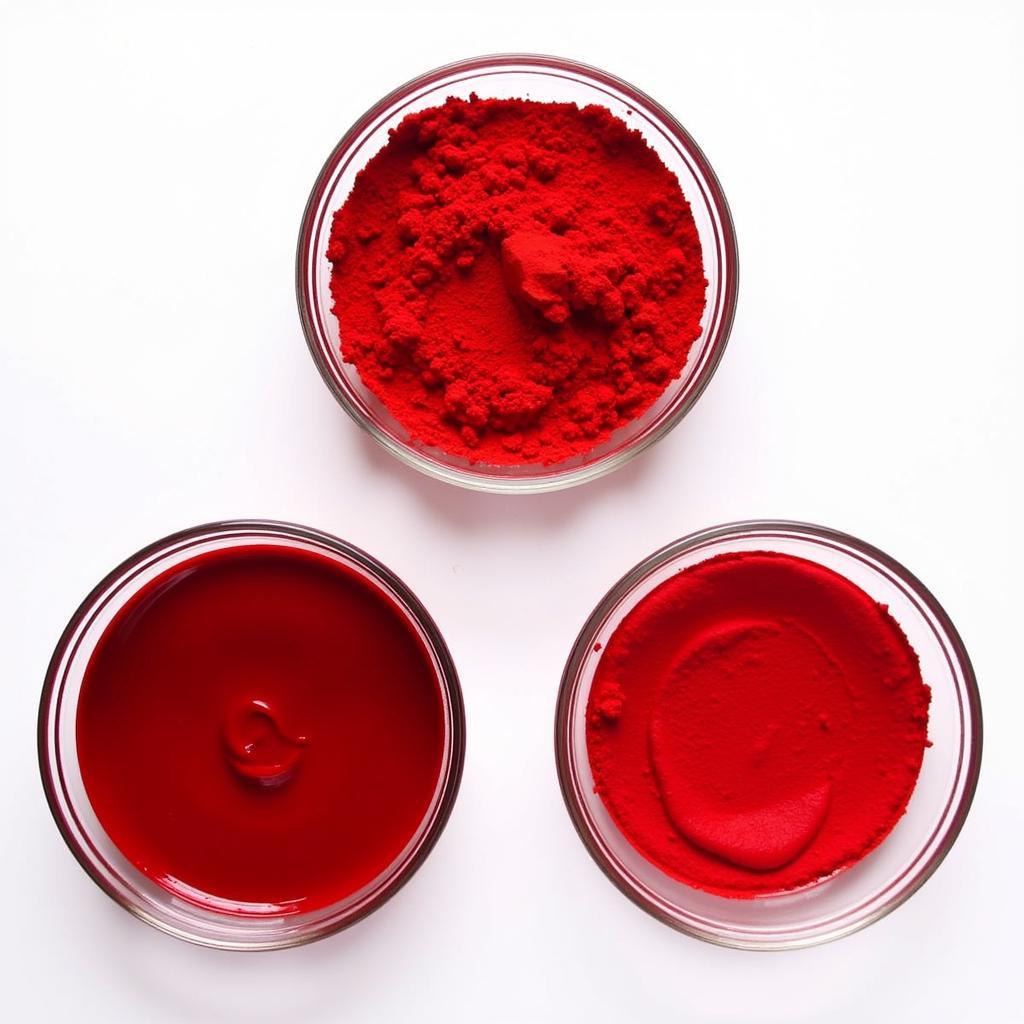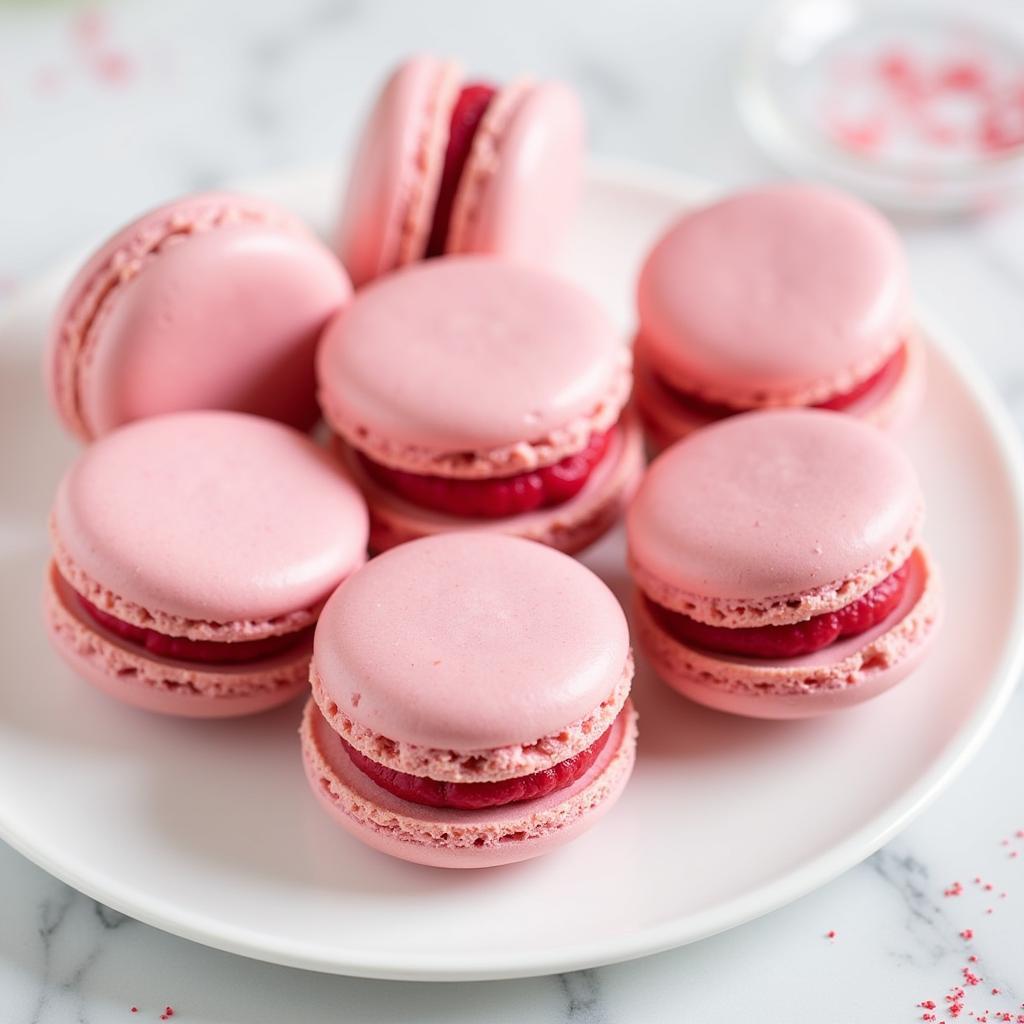Natural Red Food Coloring Powder is a great way to add a pop of color to your food and drinks without using artificial dyes. Made from fruits, vegetables, and plants, this natural alternative is perfect for those looking for a healthier way to enhance their culinary creations. Whether you’re baking a cake, frosting cupcakes, or making homemade candy, natural red food coloring powder offers a versatile and vibrant solution.
What is Natural Red Food Coloring Powder?
Unlike synthetic red food dyes that often contain petroleum-based ingredients, natural red food coloring powder is derived from nature. Common sources include beets, annatto seeds, red cabbage, and paprika. These ingredients are dehydrated and ground into a fine powder, ready to impart their rich color to your culinary masterpieces.
The Benefits of Using Natural Red Food Coloring Powder
There are many reasons why you might choose natural red food coloring powder over artificial alternatives.
- Healthier Option: For health-conscious individuals, natural food coloring offers a welcome alternative to artificial dyes. Free from synthetic ingredients and potential allergens, it provides peace of mind for those with dietary restrictions or sensitivities.
- Vibrant Color: Don’t be fooled by its natural origins; this powder packs a punch of color. From subtle pink hues to deep, rich reds, you can achieve a wide range of shades depending on the concentration and ingredient source.
- Versatile Applications: The possibilities are endless with natural red food coloring powder. Use it to tint cake batter, frostings, icings, fondant, and even beverages. Its concentrated form allows for precise color control, making it suitable for both delicate and bold applications.
 Natural Red Food Coloring Powder in Bowls
Natural Red Food Coloring Powder in Bowls
How to Use Natural Red Food Coloring Powder
Incorporating natural red food coloring powder into your recipes is simple:
- Start Small: Natural food coloring tends to be more concentrated than artificial liquid dyes. Begin by adding a small amount, such as 1/4 teaspoon, to your recipe and gradually increase until you achieve the desired color.
- Mix Thoroughly: To avoid any speckling, ensure the powder is fully incorporated into your batter, frosting, or dough. Use a whisk, stand mixer, or even a blender to achieve a uniform color.
- Adjust for Intensity: The final color may vary depending on the recipe and ingredients used. It’s always a good idea to do a test batch, especially when trying a new recipe or brand of natural food coloring.
Exploring Different Sources of Natural Red Food Coloring
 Red Velvet Cake with Cream Cheese Frosting
Red Velvet Cake with Cream Cheese Frosting
- Beetroot Powder: This earthy powder offers a range of shades from pink to deep red. It’s often used in baked goods, smoothies, and even yogurt.
- Annatto Seed Powder: Derived from the achiote tree, annatto seed powder imparts a vibrant orange-red hue. It’s commonly used in cheese, butter, and rice dishes.
- Red Cabbage Powder: This versatile powder can create shades from pink to blue, depending on the pH level of the recipe. It’s often used in icings, frostings, and even some savory dishes.
- Paprika: While primarily used as a spice, paprika also adds a reddish-orange hue to dishes. It’s perfect for adding a touch of color and smoky flavor to savory recipes.
Tips for Vibrant Results
- Fat Content: Natural red food coloring tends to appear more vibrant in recipes with higher fat content, such as buttercream frosting or rich cakes.
- Heat Sensitivity: Some natural pigments can fade when exposed to prolonged heat. If baking, try adding the color towards the end of the baking time to preserve its vibrancy.
- Storage: Store your natural red food coloring powder in an airtight container in a cool, dark place to maintain its freshness and color potency.
Natural Red Food Coloring Powder: A Colorful and Healthy Choice
 Pink Macarons with Raspberry Filling
Pink Macarons with Raspberry Filling
As consumers become increasingly aware of the ingredients in their food, natural red food coloring powder offers a welcome alternative to artificial dyes. With its vibrant hues, health benefits, and ease of use, it’s no wonder that more and more people are turning to nature’s palette to enhance their culinary creations. Whether you’re baking a birthday cake, decorating festive cookies, or simply adding a touch of color to your yogurt, natural red food coloring powder allows you to create visually stunning and delicious treats without compromising your health.
Frequently Asked Questions About Natural Red Food Coloring Powder
1. Where can I buy natural red food coloring powder?
You can find natural red food coloring powder online, in specialty health food stores, and even in the baking aisle of some supermarkets. Look for brands that offer a variety of natural colors and are transparent about their sourcing and ingredients.
2. Does natural red food coloring powder have a taste?
Some natural food colorings, such as beetroot powder, can have a slightly earthy flavor. However, the taste is usually quite subtle, especially when used in small amounts. Choose a neutral-tasting option like annatto seed powder if you’re concerned about flavor interference.
3. Can I use natural red food coloring powder to dye Easter eggs?
Absolutely! Natural red food coloring powder is a great option for dyeing Easter eggs. Create vibrant shades using beetroot powder, red cabbage powder, or a combination of both. Remember to add vinegar to the dye bath to help the color adhere to the eggshells.
4. Is natural red food coloring powder more expensive than artificial dyes?
Natural food coloring tends to be slightly more expensive than artificial dyes due to the processing involved in extracting and concentrating the natural pigments. However, many people find the health benefits and peace of mind worth the extra cost.
5. Can I make my own natural red food coloring powder at home?
Yes, you can experiment with making your own natural red food coloring powder at home! Dehydrate and grind beets, red cabbage, or other red-hued fruits and vegetables to create your own custom colors.
Looking for more ways to add vibrant color to your culinary creations? Check out our articles on lemon yellow food color, neon pink food dye, and white food color.
Need help finding the perfect natural red food coloring powder for your next recipe? Contact us at 02437655121, email us at [email protected], or visit us at 3PGH+8R9, ĐT70A, thôn Trung, Bắc Từ Liêm, Hà Nội, Việt Nam. Our team is available 24/7 to assist you!